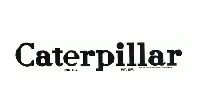- Posts: 1017
- Thank you received: 387

ACMOC Membership Benefits
- FREE quarterly magazine filled with content about antique Caterpillar machines
- FREE classified listings
- ACMOC store discounts and specials
- Full Bulletin Board Access
- Marketplace (For Sale/Wanted)
- Technical Library
- Post attachments
$44 /year ELECTRONIC
$60 /year USA
$77 /year International
Another Lincoln/Caterpillar engine drive
- trainzkid88
-

- Offline
- Platinum Boarder
- Member
Attachments:
Please Log in or Create an account to join the conversation.
- Iron Beaver
-
 Topic Author
Topic Author
- Offline
- New Boarder
- User
- Posts: 9
- Thank you received: 3
Please Log in or Create an account to join the conversation.
- Iron Beaver
-
 Topic Author
Topic Author
- Offline
- New Boarder
- User
- Posts: 9
- Thank you received: 3
It's been a while. The rheostat on my unit burned up and I had to source a new one. Then I saw the wiring was a total mess and I had to clean it up. Then life happened.
In the meantime I've been slowly realizing that this is a parts bin machine. First, the engine has been modified to run at really close to 1800 RPM and the nameplate updated accordingly. This really makes me think it was originally hooked to a 60Hz genset.
The welder unit is supposed to run at 1500 RPM. I would think any company building such a welder commercially would order a 1500 RPM engine. The welder unit is also mounted with bolt holes that were burned with an oxy/acetylene torch. The frame that holds the control box was also clearanced with a torch to clear the generator. Finally, the fuel tank was lifted up a few inches and put on blocks to clear the welding generator.
To top it all off, as I've said before the welding generator is from 1959 while the engine is from 1952. So its antique value is probably pretty low.
That said its welding value is pretty high to me, and even if it's not a collector's item I find it pretty cool. I've got some higher-amperage projects in the works.as well where a puny little 200A welder might not cut it.
Please Log in or Create an account to join the conversation.
is making up a suitable frame and driving the welder via a belt drive pulley system to get engine revs up and gen revs down an option--yes, a fair amount of work.
Another option would be a reduction drive box.
Caterpillar D330 and D333 50 cycle (Hertz) gen sets here down under had a factory fitted planetary adapter gear set between the engine and the gen set to keep engine revs up for 50 Hz units.
The engine RPM's needed to drive a 50Hz gen were in a range that caused harmonics in the cranks and fractures could likely occur under heavy loads so Cat had this modification for 50Hz applications world wide.
Cheers,
Eddie B
Please Log in or Create an account to join the conversation.
- Iron Beaver
-
 Topic Author
Topic Author
- Offline
- New Boarder
- User
- Posts: 9
- Thank you received: 3
Building a belt drive setup might be possiblè. There would be certain advantages, like the ability to run other things off the engine (A 30 kW 3 phase generator would be a dream come true for me) It would also be a lot of work.
I see three options
1) Run the generator at 1800 RPM and hope 20% overspeed doesn't hurt it, keeping the rheostat between the exciter and generator turned up accordingly
2) Run it at 1500 RPM and hope this issue did not affect the D315 engines
3) Get a 30 kW-ish generator head and turn this into a nice 3 phase genset. Then get a motor and turn the welder into a motor-driven welder
Please Log in or Create an account to join the conversation.
Please Log in or Create an account to join the conversation.
- trainzkid88
-

- Offline
- Platinum Boarder
- Member
- Posts: 1017
- Thank you received: 387
it does sound like this was a farmer built contraption if the holes are blown with a gas axe and not properly drilled etc a engineering shop would have drilled them properly or atleast cleaned up the cuts and holes so it wasnt rough.
my two cents is.
1. leave it as it is and set the governor to run at 1500 and that is really all that was done the governor was set to run faster. 100 rpm difference isn't much.
2. make it belt drive so you can get the right gearing it will also last better as its not direct coupled. being farmer built i would bet its not aligned properly and that causes problems with bearings etc.
me i would do option 2.
Please Log in or Create an account to join the conversation.
ACMOC
Antique Caterpillar Machinery Owners Club
P.O. Box 9301
Peoria, IL 61612
(309) 691-5002
cat@acmoc.org
"I became a member recently because the wealth of knowledge here is priceless."
- Chris R
"I also joined a year ago. had been on here a couple of times as a non-member and found the info very helpful so I got a one year subscription (not very expensive at all) to try it out. I really like all the resources on here so I just got a three year. I think its a very small price for what you can get out of this site."
- Jason N


